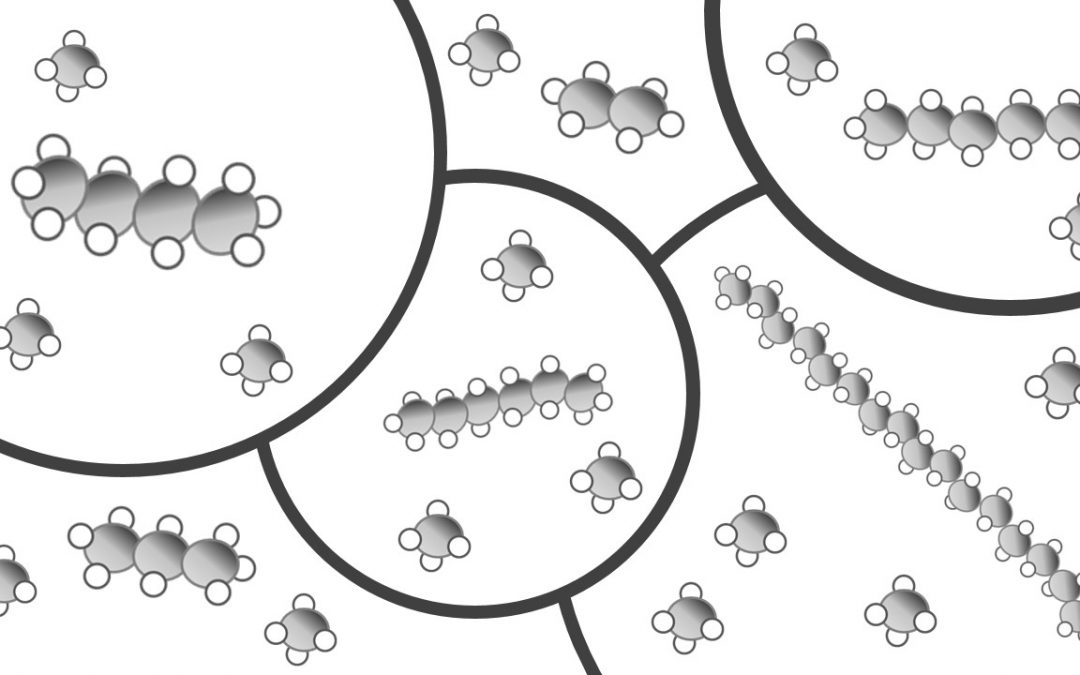-
- Size does matter in Chemistry. It matters a lot. Here are just some of the ways that size does matter.
As you go down any of the groups in the Periodic Table, the size of the atoms increases. One more electron shell has been added each time. It has implications for how the elements react because the outer electron shell is further away from the nucleus the larger the atom is. It is the outer shell electrons that are involved when atoms react. For example, the Alkali Metals in group 1 become more reactive as you go down the group, whereas the Halogens in group 7 get less reactive as you go down. Size does matter when it come to reactivity of elements.
2. Boiling Points and Melting Points:
The bigger atoms or molecules are, the higher their boiling points and melting points. We can see it empirically in the Halogens under normal conditions. Fluorine and chlorine are gases; bromine is a liquid; iodine and astatine are both solids. Of course, these atoms – and molecules, since the halogens are diatomic elements – get bigger as you go down the group. Higher boiling points for larger molecules is also a key feature that allows us to separate out the different hydrocarbon molecules when we do fractional distillation of crude oil. Larger atoms and molecules have more electrons, which result in stronger intermolecular forces (induced dipole dipole interactions). Size does matter when it comes to boiling poimts and melting points.
3. Ionisation Energies:
The (1st) Ionisation energy is the energy required to remove an electron from each atom in one mole of gaseous atoms to form a 1+ gaseous ion. The further away the outer shell electron is from the nucleus, the weaker the attractive force from the nucleus. The weaker the attractive force, the easier it is to remove it. It is the decreasing 1st ionisation energy going down the group that explains the increase in reactivity of the Alkali Metals, since they react by losing their outer shell electrons. Here, I am not even talking about the effect of shielding. Neither am I talking about subsequent ionisation energies, where we might break into a new shell which is closer to the nucleus. There may be other factors influencing the latter, but the argument about size still holds. Size does matter when it comes to ionisation energy.
4. Electron Affinities
The first point in explaining the effect of size on electron affinity is as for Ionisation energy. That is, the further away the outer electron shell is from the nucleus, the weaker the attractive force. Electron affinity is defined as: the energy change when one electron is added to each atom of 1 mole of gaseous atoms to form 1 mole of 1- gaseous ions. The weaker the nuclear attraction for the outer shell, the less easily it attracts an electron to the outer shell. It explains the decreasing reactivity of the halogens going down the group. Halogens react by gaining an electron and forming 1– ions. Size does matter when it come to electron affinity.
5. Bond Polarisation
Bond polarisation from the perspective of ionic bonding, is a deviation from the ideal ionic compound where both ions are completely spherical. Consider a situation where we have a small, highly charged positive ion and a large, negatively charged ion. For example, the metal, Al3+ , and chloride, Cl–. Here, the high charge density on the aluminium ion has sufficient pull to distort the outer shell of the chloride ion as it attracts its outer shell electrons, resulting in a bond with some covalent character, as observed in the dimer Al2Cl6:
Size does matter when it comes to ions and bond polarisation.Here are 5 areas in Chemistry where size does matter. If you can think of anymore, add a comment. I would love to read it.




